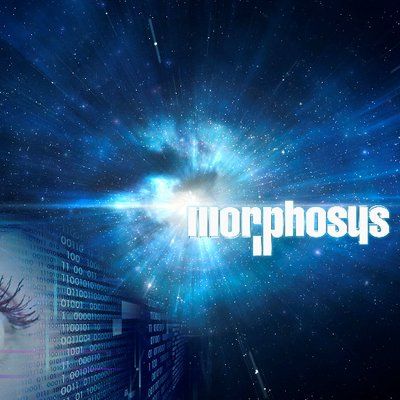预约演示
更新于:2025-10-31
I-MAB Biopharma Co., Ltd.
更新于:2025-10-31
概览
标签
肿瘤
血液及淋巴系统疾病
双特异性抗体
生物药
单克隆抗体
疾病领域得分
一眼洞穿机构专注的疾病领域
暂无数据
技术平台
公司药物应用最多的技术
暂无数据
靶点
公司最常开发的靶点
暂无数据
| 排名前五的药物类型 | 数量 |
|---|---|
| 双特异性抗体 | 5 |
| 单克隆抗体 | 4 |
| 生物药 | 2 |
| Fc融合蛋白 | 2 |
| 细胞因子 | 2 |
关联
15
项与 I-MAB Biopharma Co., Ltd. 相关的药物靶点 |
作用机制 GLP-1R激动剂 |
原研机构 |
最高研发阶段申请上市 |
首次获批国家/地区- |
首次获批日期- |
靶点 |
作用机制 CD38抑制剂 [+2] |
在研机构 |
原研机构 |
非在研适应症- |
最高研发阶段申请上市 |
首次获批国家/地区- |
首次获批日期- |
靶点 |
作用机制 IL-7Rα激动剂 |
原研机构 |
在研适应症 |
非在研适应症 |
最高研发阶段临床2期 |
首次获批国家/地区- |
首次获批日期- |
20
项与 I-MAB Biopharma Co., Ltd. 相关的临床试验CTR20243650
一项在健康受试者中评价TG103注射液对缬沙坦胶囊、华法林钠片、阿托伐他汀钙片和地高辛片的药代动力学影响的I期临床试验
主要目的:
队列1:在中国健康受试者中评价TG103注射液对缬沙坦胶囊和华法林钠片的药代动力学(Pharmacokinetics,PK)影响。
队列2:在中国健康受试者中评价TG103注射液对阿托伐他汀钙片和地高辛片的PK影响。
次要目的:
队列1:在中国健康受试者中评价TG103注射液多次给药的PK特征和免疫原性;评价TG103注射液对华法林钠片药效动力学(Pharmacodynamics,PD)的影响;TG103注射液、缬沙坦胶囊和华法林钠片的安全性和耐受性;初步探索中国健康受试者中TG103注射液对QTc间期的影响。
队列2:在中国健康受试者中评价TG103注射液多次给药的PK特征和免疫原性;评价TG103注射液、阿托伐他汀钙片和地高辛片的安全性和耐受性。
开始日期2024-10-10 |
申办/合作机构 |
CTR20240958
一项多中心、非随机、开放、平行对照、单次给药,评价TG103注射液在肾功能正常和肾功能不全受试者中的药代动力学特征的Ⅰ期临床试验
主要目的:
评价肾功能正常和肾功能不全受试者单次皮下注射TG103注射液后的药代动力学特征。
次要目的:
评价肾功能正常和肾功能不全受试者单次皮下注射TG103注射液后的免疫原性; 评价肾功能正常和肾功能不全受试者单次皮下注射TG103注射液后的安全性和耐受性。
开始日期2024-04-21 |
申办/合作机构 |
CTR20240241
TG103注射液联合二甲双胍治疗2型糖尿病患者的多中心、随机、开放、度拉糖肽对照的Ⅲ期临床试验
主要研究目的:
在经二甲双胍单药治疗血糖控制不佳的2型糖尿病患者中,分别评估TG103 注射液7.5mg及15mg每周一次联合二甲双胍治疗28周HbA1c较基线变化非劣效于度拉糖肽
次要研究目的:
1. 在经二甲双胍单药治疗后血糖控制不佳的2型糖尿病患者中,分别评估TG103注射液7.5mg及15mg每周一次联合二甲双胍治疗52周HbA1c较基线变化非劣效于度拉糖肽;
2. 在经二甲双胍单药治疗血糖控制不佳的2型糖尿病患者中,评估TG103注射液联合二甲双胍的安全性;
3. 评估不同剂量给药TG103注射液在2型糖尿病受试者中的药代动力学(PK)特征;
4. 评估TG103注射液的免疫原性。
开始日期2024-04-08 |
申办/合作机构 |
100 项与 I-MAB Biopharma Co., Ltd. 相关的临床结果
登录后查看更多信息
0 项与 I-MAB Biopharma Co., Ltd. 相关的专利(医药)
登录后查看更多信息
1
项与 I-MAB Biopharma Co., Ltd. 相关的文献(医药)2019-12-01·Reproductive biology and endocrinology : RB&E2区 · 医学
Intercellular wireless communication network between mother and fetus in rat pregnancy-a study on directed and weighted network
2区 · 医学
ArticleOA
作者: Pang, Guangchang ; Liu, Tingting ; Zhao, Miao
BACKGROUND:
The maternal body forms a wireless communication system with the embryo through the blood circulation system. Obviously, direct sampling from early embryos is damaging. Therefore, we detected changes in the concentrations of 30 signaling molecules in serum from the pregnant rats at the 14 time points, then the intercellular wireless communication network was established, to explore the regularity of signal communication between mother and fetus.
METHOD OF STUDY:
We used liquid chip scanning technology to detect 30 signal molecules at 14 time points. Statistical analysis of the data yielded significant change signal molecules. According to the secretory cells and effector cells involved in signal molecules, the communication network of different stages were drawn by using Biograph software.
RESULTS:
The process could be divided into 4 periods including early, middle, late pregnancy, and postpartum. In early pregnancy, two immune transformations occur: (a) interleukin-10 (IL-10), interleukin-13 (IL-13) increased at day 5, which promoted immunoglobin G (IgG) secretion, provided protection through the neonatal Fc receptor for IgG (FcγRn) crossing the placental barrier to reach the embryo, achieved T helper 1 (Th1) transformation into T helper 2 (Th2), reduced maternal innate and cellular immunity, and prevented fetal abortion; (b) the fetal heart was fully developed at day 7, with circulatory system established, which provided a platform for intercellular information exchange. The second transformation corresponded to the maternal immune system providing signaling molecules for the embryo to promote Th2 transformation into Th1, thus activating embryonic innate immune cells, and enabling antibody-mediated immune recognition, response and protection. Days 9-19 was a stable period. After 21 days of pregnancy, the maternal body prepared for delivery. The characteristic signaling molecules in the process were monocyte chemotactic protein-1 (MCP-1), IL-10, IL-13, IL-1ɑ, interferon-inducible protein-10 (IP-10), regulated upon activation normal T cell expressed and secreted (RANTES), thyroid stimulating hormone (TSH), IL-2, IL-6, IL-12p70 and IL-18.
CONCLUSION:
Detection of concentration changes of the factors in maternal serum could provide a tool for monitoring, diagnosis, prediction and treatment of embryo differentiation, development and health.
785
项与 I-MAB Biopharma Co., Ltd. 相关的新闻(医药)2025-10-30
·药讯随说
10月28日,云顶新耀宣布NovaBirdge Medicine(新桥生物,前称I-MAB,天境生物2024年剥离中国资产后国际创新Biotech)子公司Visara签署协议,获得后者新型双功能VEGF-A/ANG-2双靶点生物制剂VIS-101大中华区、新加坡、韩国和部分东南亚开发、生产和商业化不可撤销独家许可授权。
根据协议,云顶新耀为此将支付:1)700万美元(约4970万人民币)预付款及240万人民币自付费用报销;2)8900万美元(约6亿3200万人民币)潜在开发及销售里程碑付款;3)按净销售额潜在特许权使用费。
VIS-101(AM712/ASKG712)是一种靶向VEGF-A和ANG-2新型双功能生物制剂,可能为湿性年龄相关性黄斑变性(湿性AMD)、糖尿病性黄斑水肿(DME)和视网膜静脉阻塞(RVO)患者提供比当前护理标准更持久的治疗益处。
该药最初由奥赛康子公司AskGene开发(研发代码:ASKG712),2021年,AskGene将亚洲及日本之外地区全球开发、生产和商业化权利授权给AffaMed(蔼睦医疗,研发代码:AM712)。AskGene保留在除日本以外的亚洲地区开发、制造和商业化权利。
2022年1月,FDA批准开展视网膜疾病临床,同年5月实现nAMD患者1期临床首例患者入组。
今年10月,奥泰康将其大中华地区、新加坡、泰国、马来西亚、印度尼西亚、越南、韩国及印度权益授权给Visara。
中国方面,2021年起CDE先后批准其nAMD和DME两个适应症临床试验。
此后在中国实施了2项临床试验:nAMD 1期(招募中,已入组/计划:14/36例);DME 1期(尚未招募,计划96例)。
免责声明:本文仅作信息交流之目的,不是治疗方案推荐。如需获得治疗方案指导,请前往正规医院就诊。亦不做投资决策依据!
引进/卖出临床1期临床2期
2025-10-30
·百度百家
近日,一则私募配售(PIPE)消息在投资界掀起波澜。 高瓴资本携手新加坡政府投资公司(GIC)等机构投资者,共同与天境生物签署了一项投资协议,计划通过PIPE方式注入约4.18亿美元的资金。这一举动不仅成为近年来中国生物科技领域最大的PIPE投资案例之一,更引发了市场对高瓴资本“财团”地位的广泛关注。
◆ 高瓴与其他财团合作
通过梳理“睿兽分析”的数据,我们发现高瓴资本在医疗健康领域的投资活动中,联合投资的比例高达60%以上,特别是在一些创纪录的融资案例中,高瓴往往与众多“财团”伙伴共同亮相。例如,在最近对天境生物的4.18亿美元投资中,高瓴资本就携手GIC等知名机构。GIC,作为新加坡政府投资公司,是全球最大的主权财富基金之一,其管理资金规模高达3500亿美元。
此外,高瓴资本还与淡马锡、礼来亚洲基金等具有国资背景的机构在生物药领域有着紧密的合作关系。这些“财团”伙伴不仅为高瓴资本提供了强大的资金支持,更在投资策略、行业洞察等方面为其提供了宝贵的助力。
◆ 投资目的与战略布局
高瓴资本在医疗大健康领域的投资已达到惊人的1200亿人民币。在肿瘤创新药领域,高瓴资本展现出极为活跃的投资策略,不仅投资了PD1赛道的四大领军企业——百济神州、恒瑞医药、信达制药和君实生物,更在今年6月对嘉和生物药业进行了B轮投资。最近,高瓴又投资了天境生物,其主攻的CD47单抗疗法被业界视为PD-(L)1之后的肿瘤免疫新星。
这种对创新药的“全包围式”投法,正是高瓴资本追求稳健投资的策略体现。创新药领域虽然风险极高,但潜在收益也同样丰厚。任何一个创新靶点的突破,都可能引发市场格局的巨变。因此, 高瓴不仅瞄准细分市场的龙头企业,还致力于捕捉那些“潜在”的领军企业。
1.1 ◆ 结构性变革与机遇
在近期与港交所李小加的交流中,高瓴资本的创始人张磊指出,当前生物技术正处于一个类似于地球历史上的“寒武纪”大爆发阶段,各种创新药物和疗法如同雨后春笋般涌现。 这一阶段的特点就是“同时”和“突然”,它为高瓴资本在生物医药领域的投资带来了显著的机会。
而中国当前正在经历的结构性变革,也为高瓴资本提供了得天独厚的投资环境。 张磊在与黑石集团苏世民的对话中明确表示,中国现在是全球最佳的投资目的地。这种判断无疑进一步坚定了高瓴资本在中国市场加大投资的决心。
1.2 ◆ 行业政策影响
当前,医药领域的产业和市场结构正经历深刻变革,带量采购、处方外流等政策推动着行业洗牌。在此背景下,传统市场定义方式已显得陈旧。此外,山西省药采平台近日发布的通知引发关注,16家药企的26个药品因主动弃标、撤网而失去公立医院市场,这无疑为民营资本腾出了发展空间。
◆ 全产业链投资布局
高瓴资本在医药领域的投资策略可谓多元化。除了创新药,该资本还大举增持了多家CRO/CMO行业的领军企业,如药明康德、泰格医药、方达医药和凯莱英等。 通过这种产业链式的投资布局,高瓴成功构建了一个网状协同的投资组合。例如,药明康德专注于研发,泰格医药提供CRO服务,而凯莱英则负责CDMO服务。这样的布局不仅优化了生产力,还为高瓴资本打造了一个专业化的投资生态。
2.1 ◆ 分工与合作
此外,高瓴资本的“分工”策略也体现在与其他生物医药公司的合作中。例如,天境生物与艾伯维达成的协议就体现了这种思路。天境生物专注于中国市场,而艾伯维则负责全球其他市场。这种分工合作的方式有望加速临床研究和产品上市,从而满足当前市场对“速度”的追求。同时,高瓴资本和其他投资机构的支持也为这一过程提供了必要的资金和市场支持。
在生物医药领域,基于知识的创新因其长周期和市场的不可预测性而面临巨大风险。这种创新的窗口期往往很短,要求企业必须迅速而准确地把握市场机遇。高瓴资本通过全产业链投资和价值链角色分工,从产品生命周期的角度降低了创新的固有风险。这种策略需要强大的把控力,尤其是话语权,以确保在高瓴投资的企业转型过程中能够发挥积极作用。
引进/卖出带量采购核酸药物
2025-10-29
·雪球
全新企业品牌标志着公司向全球生物科技平台的战略转型,致力于加速创新药物惠及全球患者。公司拟在香港进行首次公开募股(IPO),并通过在美国纳斯达克(NASDAQ)和香港联交所(HKEX)双重上市,扩大对全球资本和创新资源的链接。基于全新"中心-辐射(hub-and-spoke)"业务模式,公司已成立子公司VisaraInc.(Visara),并已收购新型双特异性生物分子VIS-101(靶向VEGF-A/ANG2)。相较现行标准疗法,VIS-101有望为湿性年龄相关性黄斑变性(wetAMD)和糖尿病性黄斑水肿(DME)患者提供更持久、更有效的治疗选择。公司核心资产givastomig(一款潜在同类最佳地位的Claudin18.2×4-1BB双特异性抗体),正按照此前公布的投资计划持续推进研发。美国马里兰州罗克维尔2025年10月29日/美通社/--新桥生物(NovaBridgeBiosciences,下称"新桥生物"或"公司")今日宣布,公司已完成名称变更,由"I-Mab"正式更名为"新桥生物"。此项更名决议已获得公司于2025年10月24日召开的特别股东大会高票通过,并获董事会批准。自2025年10月30日开盘起,公司美国存托股份(ADS)将正式启用新公司名称及新股票代码"NBP"(Nasdaq:NBP),取代现有代码"IMAB"(Nasdaq:IMAB)。公司同步上线全新品牌及官网(网页链接),标志着向全球生物科技平台战略转型迈出关键一步,持续致力于加速创新疗法惠及全球患者。关于此次名称及股票代码变更,现有股东无需进行任何行动,公司CUSIP号码将保持不变。在部分第三方网站或应用程序上,若搜索"NovaBridgeBiosciences"或"NBP"时,可能暂时无法查询到公司美国存托股份(ADS)在2025年10月30日之前的历史交易数据。如遇此种情况,相关数据可暂时通过搜索"I-MAB"或"IMAB"进行查询。新桥生物LOGO:相连的分子结构组合成字母"N",寓意公司与合作伙伴携手共建更健康未来;开放的圆环象征持续创新与探索精神新桥生物执行董事长傅唯先生表示:"全新的企业品牌形象生动体现了我们新的战略核心——通过高效协作、科学转化与卓越执行,加速推进变革性疗法,为患者和投资者创造更大价值。美港两地双重上市是公司全球化战略的关键一步,这将帮助我们拓宽投资者范围、提升交易流动性和资本链接能力,并强化在快速增长的亚洲市场的影响力。"新桥生物首席执行官傅希涌博士表示:"新品牌形象与我们向全球生物科技平台转型的战略高度一致。近期,在针对givastomig(一款有望成为胃癌治疗领域的同类最佳Claudin18.2靶向疗法)的'三联会议(TripleMeeting[1])'上,公布了令人振奋的I期单药临床最新数据;同时,我们已成立子公司Visara,及其近期收购的VIS‑101(一款有望成为下一代同类最佳的新型双特异性生物分子,靶向VEGF-A和ANG2),进一步验证了新战略的可行性。我们正积极推进givastomig全球随机对照II期研究,预计于2026年第一季度完成首例患者入组。凭借新品牌带来的积极势头,充分释放创新药物的潜力,为患者和投资者创造价值。"新桥生物的商业模式与产品管线布局公司将与全球领先创新者合作,甄选并加速高潜力药物资产。该模式融合严谨的资产甄选、定制化的转化策略及高效临床执行,并依托康桥资本深厚资源与全球能力,在多治疗领域推进最具潜力的创新药。公司将采用"中心-辐射(hub-and-spoke)"模式,通过设立专注特定治疗领域或资产的卫星子公司,保持高效灵活的运营结构,从而实现风险可控与价值最大化。管线概览Givastomig是一款潜在同类最佳地位的Claudin18.2×4-1BB双特异性抗体,目前正在开展1b期临床试验,旨在用于治疗胃癌及其他Claudin18.2阳性的胃肠道恶性肿瘤。计划启动一项全球随机对照的II期研究,目标于2026年第一季度招募首位患者。Givastomig正通过与ABLBio的全球合作进行联合开发,其中新桥生物作为牵头方,与ABLBio平分全球权益(大中华区和韩国除外)。Ragistomig是一款抗PD-L1×4-1BB的双特异性抗体。基于一期临床数据,目前开展的1b期研究旨在扩大治疗窗口,预计将在2026年下半年产生结果。该项目正与ABLBio联合开发。Uliledlimab(抗CD73单抗)在肿瘤微环境中,CD73是腺苷介导免疫抑制的限速酶。目前正在开展的随机II期临床试验中,将uliledlimab联合特瑞普利单抗(toripalimab)的方案与帕博利珠单抗(Pembrolizumab)单药或特瑞普利单抗单药在经CD73筛选的患者人群中进行对比,其无进展生存期(PFS)数据预计将在2026年下半年公布。新桥生物拥有uliledlimab在大中华区以外的全球权益。VIS-101由新桥生物在新商业模式下成立的子公司Visara收购,是一款靶向VEGF-A和ANG2的双特异性生物分子,目前处于II期开发阶段。VIS-101是一款新型双特异性生物分子,靶向VEGF-A和ANG2,且分子活性更强,相较于现有标准疗法,有望为湿性年龄相关性黄斑变性(wetAMD)、糖尿病性黄斑水肿(DME)和视网膜静脉阻塞(RVO)患者提供更持久的疗效。VIS-101已在美国和中国完成了初步的安全性和剂量递增研究,目前正在中国完成一项随机剂量范围的II期研究。VIS-101预计将于2026年具备开展III期试验的条件。此次收购已通过新成立的子公司Visara完成。Visara是一家临床阶段生物制药公司,专注于开发同类最佳的眼科疗法,其依托新桥生物约3700万美元的注资,以及一家战略合作伙伴所贡献的部分相关权益而成立。新桥生物成为Visara的控股股东,并拥有VIS-101的全球权益。Visara由其联合创始人兼执行董事长EmmettJ.Cunningham,Jr.博士领导。Cunningham博士在过去25年中一直是一位医生、创新者、企业家和投资人,曾任黑石集团高级董事总经理以及ClarusVentures董事总经理。Cunningham博士也是国际公认的感染性和炎症性眼病专家,合作发表了逾450篇学术论文。[1]:"AACR–NCI–EORTC分子靶点与癌症治疗国际会议"(AACR-NCI-EORTCInternationalConferenceonMolecularTargetsandCancerTherapeutics)也被称为"三联会议(TripleMeeting)",于2025年10月22日至26日在美国马萨诸塞州波士顿举行。关于新桥生物新桥生物(更名前为I-MAB;纳斯达克代码:IMAB,自2025年10月30日起将更改为"NBP")是一家全球生物科技平台公司,致力于加速创新药物的可及性。我们将专业的业务拓展能力与敏捷的转化临床开发相结合,以发现、加速并推进突破性资产。通过衔接科学、战略和执行,新桥生物使变革性疗法能够从发现阶段快速推进至有需求的患者。公司的差异化管线主要由givastomig和VIS-101领衔。其中,givastomig是一款潜在同类最佳的双特异性抗体(Claudin18.2×4-1BB);VIS-101是一款同类第二且有望成为同类最佳的双功能生物制剂,靶向VEGF-A和ANG2。Givastomig通过4-1BB信号通路,在表达Claudin18.2的肿瘤微环境中条件性激活T细胞。givastomig正开发用于治疗Claudin18.2阳性的胃癌及其他胃肠道恶性肿瘤。新桥生物还与合作伙伴ABLBio合作开发ragistomig,这是一款双特异性抗体,在实体瘤中将PD-L1作为肿瘤结合靶点、4-1BB作为条件性T细胞激活剂。此外,新桥生物拥有uliledlimab在中国以外地区的全球权益。Uliledlimab是一款抗CD73抗体,靶向肿瘤中由腺苷介导的免疫抑制。VIS-101靶向VEGF-A和ANG2,可为湿性年龄相关性黄斑变性(wetAMD)和糖尿病性黄斑水肿(DME)患者提供更强有力且持久的疗效。VIS-101目前正在针对湿性AMD开展一项大型、随机、剂量范围的2期研究。新桥生物是Visara的控股股东,并拥有VIS-101的全球权益。欲了解更多信息,请访问:网页链接公司拟在纳斯达克与香港联合交易所双重上市关于新桥生物拟赴香港IPO并在香港联交所(HKEX)上市的更多信息将于日后公布。拟议发行的时间、规模、结构和具体条款尚未确定,仍取决于市场状况以及包括香港联交所(及其上市委员会)在内的相关监管机构的审批。对于拟议的香港上市是否会完成、何时完成或将在何种条款下完成,无法提供任何保证。在获得监管机构和公司必要批准的前提下,公司目前预计将维持其在纳斯达克的美国存托股(ADS)上市地位,并寻求在美国和香港实现双重上市。最终决定将根据市场状况和监管反馈作出。本公告仅为信息披露之用,且不构成对公司任何证券的认购、购买或收购要约或邀请。公司股东及潜在投资者在涉及公司证券的交易时,应谨慎评估相关风险。前瞻性声明本公告包含前瞻性声明。这些声明依据1995年美国《私人证券诉讼改革法案》的"安全港"条款作出。可以通过术语例如"将"、"预计"、"相信"、"旨在"、"预期"、"未来"、"打算"、"计划"、"潜在"、"估计"、"有信心"等以及类似表述(或其反义表述)来识别这些前瞻性声明。新桥生物也可能在其提交给美国证券交易委员会(SEC)的定期报告、向股东发布的年度报告、新闻稿及其他书面材料中,以及公司高管、董事或员工向第三方所作的口头陈述中作出书面或口头的前瞻性声明。凡不属于历史事实的陈述(包括关于新桥生物的信念和预期的陈述)均为前瞻性声明。本新闻稿中的前瞻性声明包括但不限于以下内容:新的公司战略可能带来的潜在益处;公司以新名称和股票代码在纳斯达克交易的有效性;新桥生物拟推进香港IPO,进而实现拟在纳斯达克全球市场与香港联合交易所(HKEX)双重上市的计划;givastomig、VIS-101及公司其他候选药物的战略、临床开发、计划、结果、安全性和有效性;新桥生物候选药物(包括givastomig和VIS-101)的战略与临床开发;预期的临床里程碑和结果及相关时间;公司的预期资金可维持运营的周期。前瞻性声明涉及的风险和不确定性可能导致实际结果与这些前瞻性声明中包含的结果存在重大差异,包括但不限于以下因素:新桥生物证明其候选药物安全性和有效性的能力;公司获得证券监管机构及交易所必要批准的能力;候选药物的临床结果(可能支持也可能不支持进一步开发或新药申请/生物制品许可申请(NDA/BLA)的批准);相关监管机构(包括美国证券交易委员会以及香港联合交易所上市委员会)就新桥生物候选药物监管审批所作决定的内容和时间;新桥生物在候选药物获批后的商业成功能力;新桥生物获得并维护其技术和药物知识产权保护的能力;新桥生物对第三方开展药物开发、生产制造及其他服务的依赖;新桥生物有限的运营历史,以及新桥生物获得额外运营资金并完成其候选药物开发和商业化的能力;以及新桥生物已于2025年4月3日向美国SEC提交的20-F年度报告中"风险因素"部分更全面讨论的风险,以及新桥生物随后向SEC提交的文件中讨论的潜在风险、不确定性和其他重要因素。所有前瞻性声明均基于新桥生物当前可获得的信息。除法律要求外,新桥生物不承担因获得新信息、未来事件或其他原因而公开更新或修订任何前瞻性声明的义务。新桥生物投资者及媒体联系人PJKelleher–LifeSciAdvisors+1-617-430-7579pkelleher@lifesciadvisors.com雷鸣(KylerLei)–新桥生物+1-240-745-6330kyler.lei@imabbio.comIR@imabbio.com
并购IPO
100 项与 I-MAB Biopharma Co., Ltd. 相关的药物交易
登录后查看更多信息
100 项与 I-MAB Biopharma Co., Ltd. 相关的转化医学
登录后查看更多信息
组织架构
使用我们的机构树数据加速您的研究。
登录
或

管线布局
2025年11月02日管线快照
管线布局中药物为当前组织机构及其子机构作为药物机构进行统计,早期临床1期并入临床1期,临床1/2期并入临床2期,临床2/3期并入临床3期
临床前
10
2
临床1期
临床2期
1
2
临床3期
其他
11
登录后查看更多信息
当前项目
| 药物(靶点) | 适应症 | 全球最高研发状态 |
|---|---|---|
菲泽妥单抗 ( CD38 ) | 难治性多发性骨髓瘤 更多 | 临床3期 |
依非白介素α ( IL-7Rα ) | 胶质母细胞瘤 更多 | 临床2期 |
Givastomig ( 4-1BB x CLDN18.2 ) | 胃食管交界处腺癌 更多 | 临床1期 |
TJ-Bs02 ( 4-1BB ) | 实体瘤 更多 | 临床前 |
TJ-IA18 | 肿瘤 更多 | 临床前 |
登录后查看更多信息
药物交易
使用我们的药物交易数据加速您的研究。
登录
或

转化医学
使用我们的转化医学数据加速您的研究。
登录
或

营收
使用 Synapse 探索超过 36 万个组织的财务状况。
登录
或

科研基金(NIH)
访问超过 200 万项资助和基金信息,以提升您的研究之旅。
登录
或

投资
深入了解从初创企业到成熟企业的最新公司投资动态。
登录
或

融资
发掘融资趋势以验证和推进您的投资机会。
登录
或

生物医药百科问答
全新生物医药AI Agent 覆盖科研全链路,让突破性发现快人一步
立即开始免费试用!
智慧芽新药情报库是智慧芽专为生命科学人士构建的基于AI的创新药情报平台,助您全方位提升您的研发与决策效率。
立即开始数据试用!
智慧芽新药库数据也通过智慧芽数据服务平台,以API或者数据包形式对外开放,助您更加充分利用智慧芽新药情报信息。
生物序列数据库
生物药研发创新
免费使用
化学结构数据库
小分子化药研发创新
免费使用





